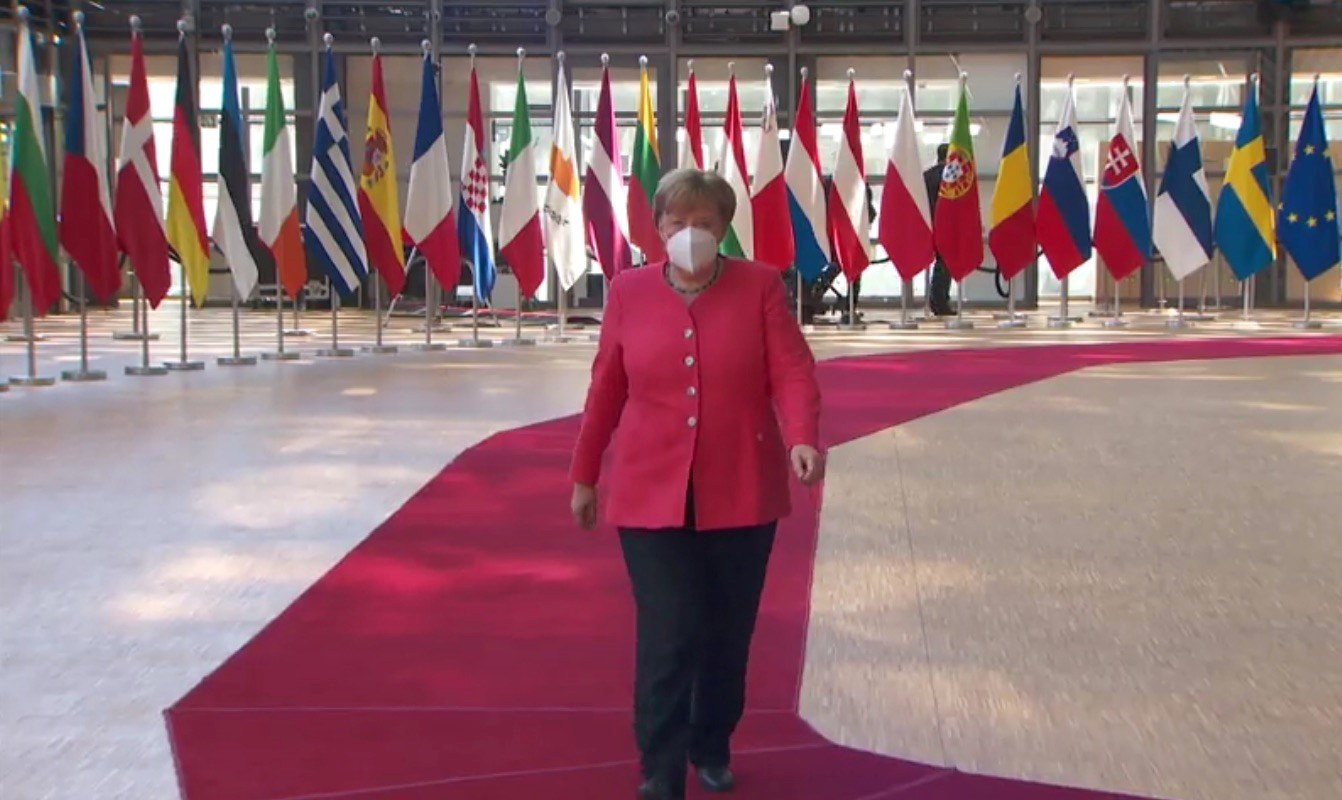On 12 December 1952, before representatives of European States, French Foreign Minster Robert Schuman opened a conference on the proposed creation of a European Health Community.
If politicians had listened, Schuman’s Plan for a European Health Community would have solved many of today’s Covid-19 problems and much more besides.
How?
Robert Schuman, with Health Minister Paul Ribeyre on his right, opens the conference on the European Health Community at the French Ministry of Foreign Affairs.
This European Health Community would have given Europeans today a streamlined machine to deal with a broad range of problems.
It was not exclusively for the Europe of the Six. Those invited included Austria, still partly occupied by the USSR. It would have stretched from Turkey to Portugal, UK and Iceland in the West.
Today’s Tumult
Today’s virus tumult has already cost untold billions in damage to the economy. It will cost untold billions more over the coming years.
European top leaders met in an extraordinary five-day European Council in mid-June 2020 to work out a multi-trillion euro plan to rescue the European economy from mortal collapse. The world’s largest trading unit is in danger of falling down as the centre of its historic age of prosperity it had enjoyed since 1950. That’s when the first European Community set Europeans on a path to three-quarters of a century of peace and prosperity.
Today Europe is left with an uneven way for tackling the COVID-19 crisis. The Health Community, in contrast, aimed to provide a democratic and scientific way to reach consensus. It also had safeguards against global politics that today we see wrecking the western economy.
Would it have saved lives?
Yes.
Would the economy have avoided such a costly lockdown?
Yes.
The Community Thread
The European Community was a revolutionary idea of genius. Instead of war, it brought peace and prosperity. Instead of hatred, it brought trust among nations and cooperation between former foes.
Five short years after WW2, on 9 May 1950, the French Government had proposed a European Coal and Steel Community, ECSC.
What had the Health Community in common with Europe’s first Community?
A lot, it would seem. It had very similar institutions. Fully developed, it would provide democratic involvement in an elected assembly from
- civil associations,
- individuals with special needs
- government departments and ministers.
It would be different and separate from the WHO, the World Health Organisation.
Stopping War
Stopping the outbreak of a further war in Europe was the key concept behind the ECSC. It succeeded. By 2020 none of the Community’s Member States had had attacked another for three-quarters of a century. No period in Western European history has witnessed such an event.
How did it stop war? The first Schuman government in July 1948 proposed the formula: a democratic European Assembly — that saw light in Council of Europe – and a customs union. The Assembly was instrumental in setting up Europe’s first Court of Justice. All States that joined the Council of Europe had to sign up to the Convention of the Human Rights and Fundamental Freedoms. Citizens could take their grievances against governmental abuse to the Court. It stopped governments slipping down the slope into autocracies, like the Nazis and the Fascists.
Europeans then benefited from the Coal and Steel Community that outlawed international cartels. The European Coal and Steel Community combined with the Council of Europe made major advances for all Europeans.
That stalwart defence of democratic values and human rights is now clear to all who wish to study European history. But what was behind the European Health Community that Schuman proposed in 1952?
Its Purpose and Compass
Detractors called the Coal and Steel Community Schuman’s ‘Pool‘ as if the only function was to share the resources of coal and steel. The European Health Community was therefore dubbed ‘the White Pool‘ to contrast it with the black pool of coal.
Was the proposed Health Community merely going to share or pool white bandages, garments and pills?
Far more!
Disease is as devastating as war. Health is the way to prosperity.
Schuman’s supranational idea of a European Community was focused on two goals: stopping the causes of war and creating prosperity in a zone of peace.
Paul Ribeyre, the Minister for Health who worked on the project with Schuman, declared that the health of citizens was the first consideration of the State, to which all other values must be subordinated. The first duty of the Statesman was to assure the health of citizens because the foundation of the State depended on it.
In scope the Community would extend far beyond France, far beyond the Europe of the Six.
On 16 September M. Ribeyre presented his plans to the French Cabinet who gave him approval to take it to members of the OEEC, Organisation of European Economic Cooperation. This was the body set up following the US Marshall Plan, now called the OECD, the Organisation for Economic Cooperation and Development.
Ribeyre invited Member States to join in this common effort of well-being. Besides the Six, it included Austria, Denmark, Greece, Iceland, Portugal, Sweden, Switzerland, United Kingdom and Turkey. Ireland was the only State to decline.
The Plan was merely a first step to broadening the domain of better health to a wider geographical boundary. Schuman left office in 1953. Opposition came from nationalist politicians and, as historians record, the subtle and persistent opposition of pharmaceutical firms and cartels.
We are paying the consequences of that missed opportunity.
David Price



